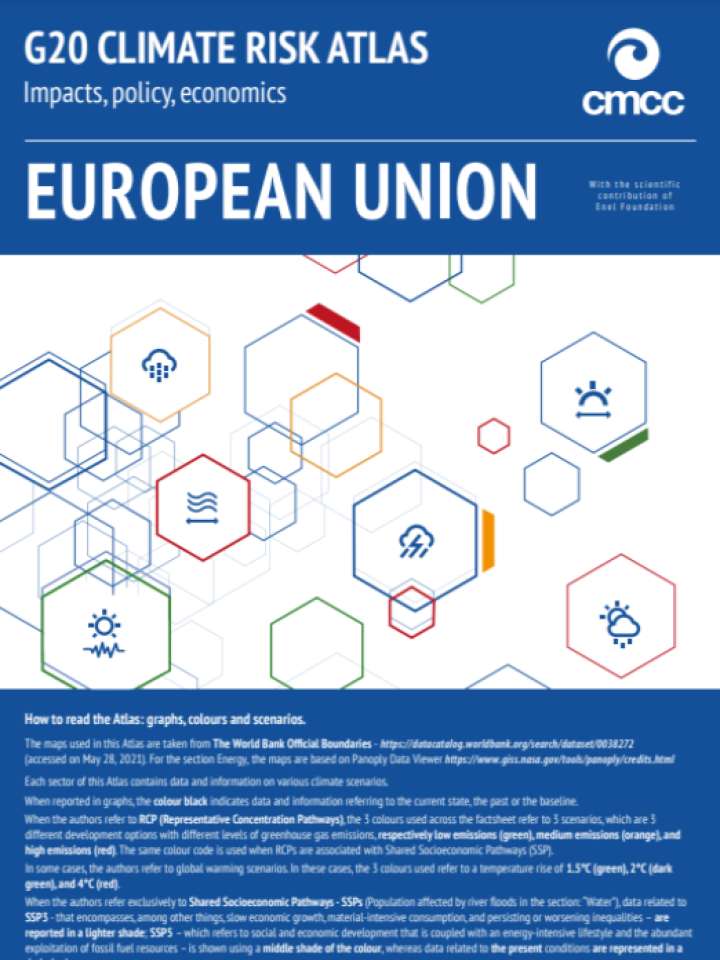G20 Climate Risk Atlas: European Union
This report summarizes the risks posed on European Union's (EU) climate, ecosystems, food and water systems, and citizens by climate impacts, as well as its policies for mitigation, adaptation, and emissions reductions. Europe is generally characterized by a temperate climate. Most of Western Europe has an oceanic climate, featuring cool to warm summers and cool winters. Southern Europe has a distinctively Mediterranean climate, which features warm to hot, dry summers and cool to mild winters. Central-eastern Europe is classified as having a continental climate, which features warm to hot summers and cold winters. Due to its vast geographic expanse, the EU is expected to face a wide array of climate-related hazards. There is agreement in the research community that the impacts will hit Southern Europe more than Northern Europe, increasing the North-South divide.
The G20 Climate Risk Atlas represents a science-based tool that can support decision-making processes and the planning of required policies. The simple language, attractive features, and design is intended to ensure that the Atlas lends itself to easy consultation and dissemination, therefore opening the door, not only to decision-makers and stakeholders, but also to the general public, creating a participatory and iterative process which can be used to increase public awareness on climate issues. In the process of a sustainable transition, climate change must be considered the fundamental pillar of the political agenda. Only committed and timely mitigation and adaptation actions can limit the intensification of extreme events, the destruction of ecosystems, infrastructure and populations, and in the process enable people to benefit from a better and more equitable future.
Explore further
